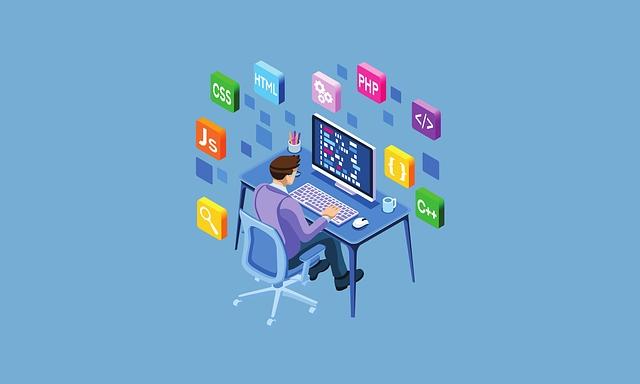
Definition
A full-stack web developer is a person who can develop both the client and server software. They should know about mastering HTML, CSS and programming a browser using JavaScript, JQuery, Angular, or Vue, programming a server using PHP, ASP, Python, or Node, and programming a database using SQL, SQLite, or MongoDB.
Full Stack development
Among the most highly regarded web development professionals. Typically, they are web developers who work with the digital entity’s front and back ends, as well as in areas such as writing computer code, user experience design, project management, and client relations. They work with the digital entity’s front and back ends. This hybridization increases the demand for full-stack developers in a variety of professional capacities.
Roles
The main responsibilities of full-stack developers are to merge front-end and back-end web development skills in a wide variety of tasks in building and maintaining the digital entity. The position requires versatility, innovative thinking, and a combination of technical programming knowledge and high-level client communication skills.
Skills required for the developer
Python: python is one of the leading programming languages for modern end web development for those interested in full stack development. Stack Overflows 2020 Developer found that Python was the most wanted programming language and it supports many different programming styles and particularly in data visualization.
JavaScript: It is another valuable coding skill in full stack development and it is regarded for its dynamic array of uses in web development by allowing developers to make complex style declarations, and support high-level math calculations from other web pages.
HTML: Hypertext Mark-up Language is a widely used coding language in web development. It refers to the web pages that are linked together and is primarily used to inform a web browser to display web page elements via tags.
CSS: Cascading Style Sheets is one of the most used coding languages in front-end development. This software creates a design based on color and style for HTML structural elements.
SQL: Databases and back-end development commonly use Structured Query Language (SQL). It manages and updates records and accesses change databases.
Roles and Responsibilities
- Developing front-end website architecture.
- Designing user interactions on web pages to make them visually appealing.
- Developing back-and website applications.
- Creating, and managing servers and databases for functionality.
- Designing and developing effective APIs.
- Choosing the most appropriate tech stack needed for the product.
- Ensuring responsiveness of applications.
- Working alongside graphic designers for web design features.
- Seeing through a project from conception to finished product.
- Meeting both client needs as well as technical needs.
- Testing and fixing bugs or other coding issues, troubleshooting, debugging, and upgrading software.
- Create security and data protection settings.
- Staying abreast of developments in web application frameworks, libraries, software, and programming languages.
- Ensuring cross-platform optimization for mobile phones.
- Documenting the application thoroughly and finally deploying the product using relevant cloud services or some similar methods.
Steps required for a developer
Web development basic: The blatant error that most people make is to directly jump into web development without understanding what happens in it.
HTML, CSS: The very fundamentals for any web developer are HTML and CSS. These are used to develop static web pages. To advance your learning from here, it is recommended to learn advanced styling methods; start using Bootstrap (CSS part) and then move on to SCSS, Tailwind CSS, etc. There are numerous options, choose your best fit.
JavaScript basics and DOM manipulation: Now the next step developers take is to learn JavaScript and DOM manipulation. JavaScript may be intimidating at this stage to know. So instead, you can use 3rd party plugins, namely APIs, to give life to your web pages.
Strengthen your foundations: Before you move on to the next big step (learning JavaScript), you should preferably practice developing some simple dynamic websites using your current learning of HTML, CSS, Bootstrap, and APIs.
Advanced JavaScript: Before diving straight into advanced JavaScript, it is recommended to familiarize yourself with jQuery. All technologies involved in the MERN stack are based on JavaScript. Most modern websites use ES6 (ECMAScript), so it would be good to build your knowledge in this.
Choose your frontend stack: Now choose your frontend tech stack – React, Angular, Vue, etc. (JavaScript based) React is a great choice and you should learn it perfectly first.
Strengthen your front-end skills: Mastering a library like React (or framework like Angular or Vue) is a mammoth task honestly. But you don’t need to know everything at once. Having a working knowledge of that technology is a great start. And the best way to do so is by implementing practical projects.
Advantages
- It can master all the techniques involved in a development project
- It can make a prototype very rapidly
- It can provide help to all the team members
- It can reduce the cost of the project
- It can reduce the time used for team communication
- It can switch between front and back-end development based on requirements
- It can better understand all aspects of new and upcoming technologies
Disadvantages
- The solution chosen can be wrong for the project.
- The solution chosen can be dependent on developer skills
- The solution can generate a key person risk.
- Being a full-stack developer is increasingly complex.
